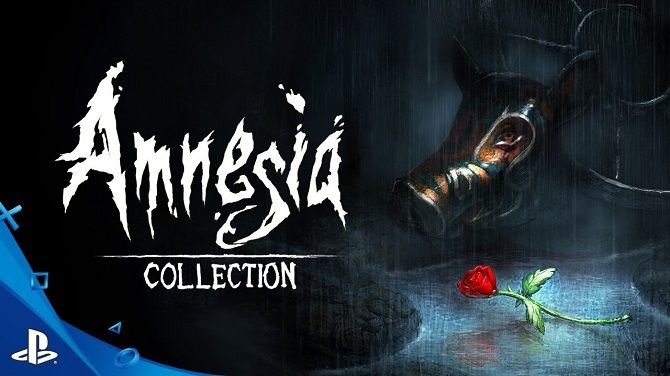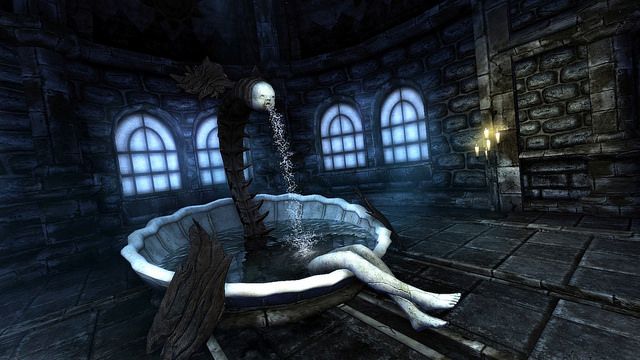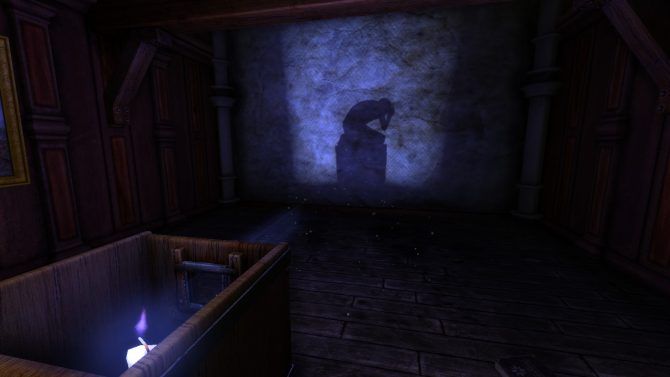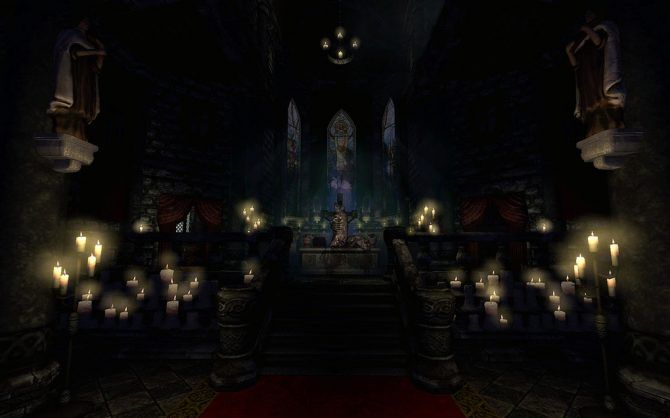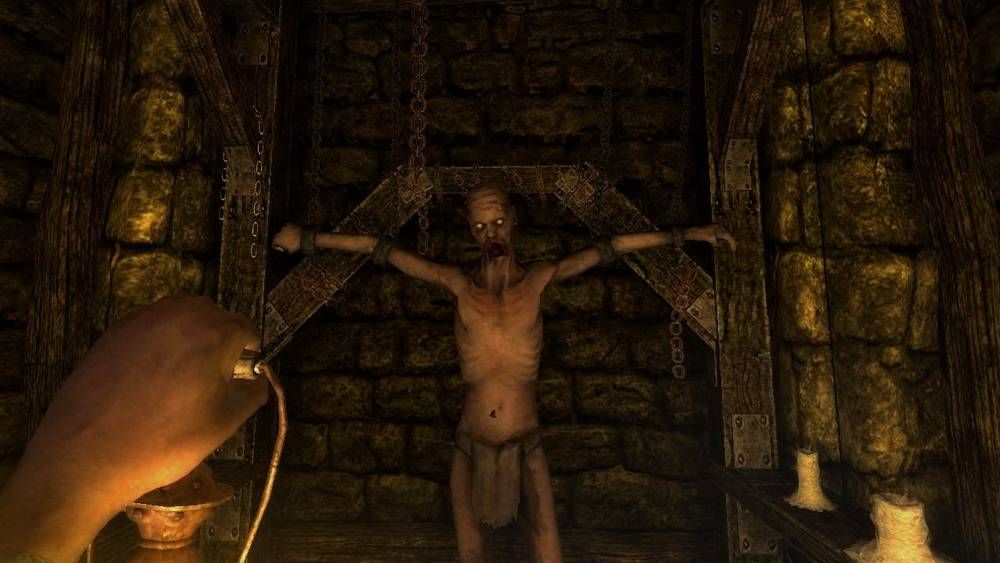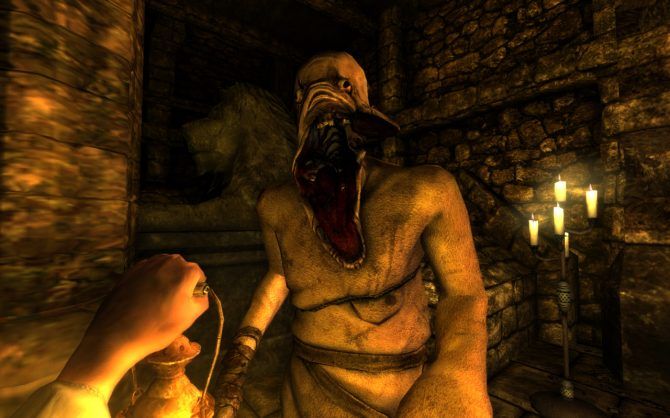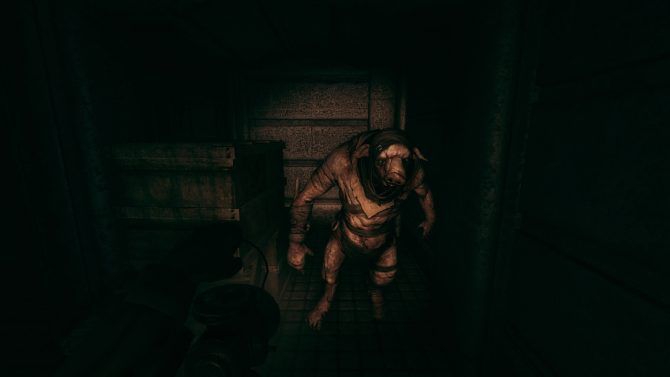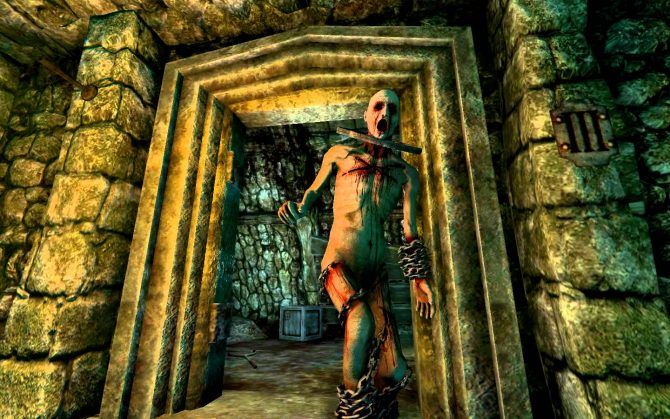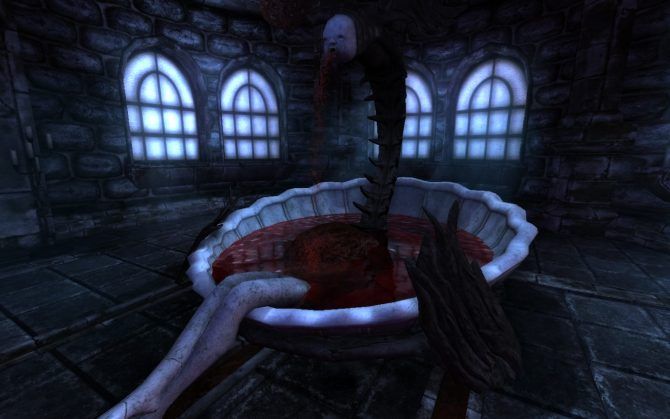Do you remember those times when you’ve been genuinely scared? A moment where you had a physical reaction because you were so terrified? Maybe it was a vivid nightmare you had just woken up from or maybe it was eerily effective horror movie... maybe even a video game….
The Chinese Room and Frictional Games are hoping to stir up those haunting memories (or create new ones) with Amnesia Collection. The compilation features two games and one short piece of DLC from their successful horror series.
This is not a nostalgic trip for yours truly as I only played a short portion of the first game on my PC soon after it first came out. I went into the collection with (mostly) fresh eyes and I can honestly say that I won’t be forgetting some of these scares anytime soon. But in the same vein, not everything that I played was as memorable.
Let’s break down the actual compilation first: Amnesia Collection contains Amnesia: The Dark Descent (2010) and Amnesia: A Machine for Pigs (2013). Also included is the strange bit of DLC from the first game called Amnesia: Justine (2011). The collection is available on PC and also makes these titles available for the first time on consoles with the PS4 release.
There’s really not much in the way of upgrades or extras for the games. The PC collection contains the same ports of the originals except with no mod support. The PS4 version has trophies and some GUI changes to make it easier to use on consoles. In terms of technical specs, Frictional Games stated:
“All games will be 1080p. The Dark Descent and Justine will run at 60 fps. We are having some performance issues with A Machine for Pigs and might have to settle with 30 fps for it.”
The stories in all the Amnesia titles are complicated and generally multi-layered. Because of this (and because I don’t want to give too much away) I’m going to just give very short synopses. Dark Descent focuses on Daniel as he wakes up in an abandoned castle with no memory and is pushed forward by an insane need for revenge. Machine is set 60 years later (1899) and follows Mandus as he searches for his missing twin boys in a giant steampunk facility below the streets of London. Both stories are connected by a vague backstory of mystical orbs that were recovered in Algeria; of course these McGuffins are able to conjure horrors from beyond as well as in the minds of man.
Justine was originally made as a part of a larger project to promote Portal 2 so the DLC purposefully imitates Valve’s massively popular game. Basically, you are a female prisoner being put through a number of trials that put you in the role of survivor, savior, and/or executioner.
Gameplay is very similar between the three titles and is really what makes the Amnesia series so memorable. All are first person horror-adventure games where you are given a lantern to explore. The series is most famous for its ‘hiding in the darkness’ mechanic where the player has to avoid light altogether in order to not be killed by vicious creatures. Physic and logic puzzles are prominent in Dark Descent and Justine but are mostly absent from Machine. The same is true for inventory management (especially with the precious light-producing tinderboxes) and the sanity meter.
Building atmosphere is incredibly important with horror games as sound, graphics and pacing collide to try and capture the most terrifying experience. Ultimately all of the Amnesia titles are successful in being scary, but each has their own strengths and weaknesses. The main two contenders are Dark Descent and Machine since Justine is just an offshoot of the former with the same assets. The big question is how to the two games compare and hold up today.
The original Amnesia was released six years ago from an indie studio and it shows. That being said, the dark aesthetic and the blocky nature of castle design are still impressive. There are some character models (especially of human bodies) that haven’t aged as nicely. The audio is fantastic with the ambient music working in concert with smart and unpredictable sound effects. The voice work does falter a bit unfortunately, mainly due to the appearance of a mentor character late in the game. Bill Corkey gives a bland and somewhat goofy portrayal of key character which quickly broke immersion.
Dark Descent is also blessed with some great pacing. Outside a few moments of backtracking and one or two obtuse puzzles, you’re in for a well curated ‘descent.’ There’s a slow burn with the story and gameplay that goes a long way. The hideous ‘Gatherers’ don’t start terrorizing you right off the bat but you are susceptible to certain sanity effects from the get-go: like when the castle starts to shake, or red puss grows from the walls, or, worst of all, when all the lights go out. If you’re in the shadows too long (and don’t forget that’s the only ‘safe’ place to hide) your sanity will drop as the camera and controls reflect your fear. This constant struggle between the need for light and dark is the primary reason that Dark Descent is still remembered as a modern classic of the survival-horror genre.
And then there’s Machine. The graphics are unsurprisingly much crisper for the more recent game. The labyrinthine facility is larger-than-life. There are panoramic moments where octopus like constructions sprawl everywhere with their pipe tentacles. The antagonistic and disgusting Manpigs are sometimes seen in great detail. But these graphical improvements don’t work in the game’s favor. Many of the areas of the facility look similar and get redundant. The swine-monsters lose the dark mystery of the Gatherers. I also found some issues with clipping as well. The audio, while keeping the eerie otherness of the original, is a bit more bombastic and suffered from brief moments of unintended silence. It felt like the elements that made Dark Descent so great were stripped away while a fresh coat of paint was applied as a distraction.
This is seen full force with the structure of the game. Machine contains a familiar slow build which never grows into anything substantial. The encounters with the Manpigs are surprisingly limited and very little pads out the rest of the journey. You walk down hallway after hallway, sometimes stopping to pull or turn a lever (these are the ‘puzzles’ of the game). The sanity meter is completely gone and replaced by crippling flashbacks where your speed grinds to a halt. Unfortunately, slowdown wasn't limited to just that as the game struggled to keep up with all the architecture at select points in the story.
This isn’t to say that there isn’t actual horror in the sequel; It’s just presented very differently. A lot of the strengths of Dark Descent organically evolve through gameplay whereas Machine takes a more cerebral route. The story elements of both games are actually well written but clunkily delivered through the survival-horror standard of found notes/diaries. The tale of the man who built the massive machine under London is the stronger of the two; its exploration of the horrors that man is capable of is fascinating and quite unsettling. This kind of story seems better suited for a novel or a screenplay rather than haphazardly scattered on floors, desks, and bookshelves. Machine does achieve fear through some of the visuals and the rare encounter with a Manpig but these are fleeting moments. Or in other words, forgettable.
The black sheep of the collection is Justine. It has some decent moments packed into the 30 minutes playtime but there’s one extremely frustrating design decision: You can’t save. While it is short and there are only a handful of situations where you can die, it feels like this choice was made just to prolong the DLC.
The worst part is a section where you have to run away from a water-traversing monster while trying to solve a few puzzles. It ends up being an exercise in ‘quickly explore this area and see if there’s anything useful’ which will inevitably end in death. This point is about 15 minutes in and each time you restart you have to sit through a unskippable waking up sequence.
The story and gameplay found within the DLC pales in comparison to Dark Descent. For some reason the lantern, a series staple, isn’t fully utilized in this small chapter. Justine is that part of the package that you can just ignore (unless you’re a completionist).
At the end of the day, Amnesia Collection is more a port of two games and one piece of DLC (about 20+ hours of gameplay) rather than a proper compilation. There aren’t any extra features and nothing has really been remastered. That being said, the quality of the games and the fact that (some) console players can now experience these titles does a lot to redeem the lack of new content.
Where Machine is a flawed but intriguing playthrough, Dark Descent still holds up as an important piece of survival-horror history which should be experienced. It’s a perfect mix of hide-in-the-shadows anxiety with trippy mind games that is a blast to survive through. There’s also the bonus of a commentary option for only this game (which is surprising to find out wasn’t an addition to the collection). Unfortunately, there’s no subtitles for this feature so you might struggle to decipher the words behind heavy Swedish accents.
Amnesia Collection retails for $29.99 USD on both the PC and PS4. If you own Dark Descent on PC, I would suggest skipping the collection and just buying Machine if you’re curious enough. But if you’re someone who’s never tried the series (especially if you own a PS4 but don’t have a PC strong enough to handle the original game) I highly recommend picking up the compilation. Sometimes it’s worth it to go out and seek out those scares that will stay with you a long, long time.

